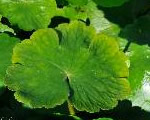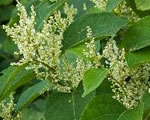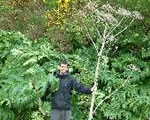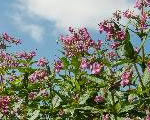 Go to main content
Go to main content
Archive Website of the UK government
Please note that this website has a UK government accesskeys system.
Main menu
Page menu
Home and community

Dealing with invasive plants and harmful weeds

Some non-native plant species can become a problem because they are bigger, faster-growing or more aggressive than native species. Find out how to identify common invasive plants and weeds and what your responsibilities are if they are growing on your land.
Why invasive plants and harmful weeds are a problem
Many non-native plant species exist in the UK without causing a problem, but a few become invasive. They upset the balance of the ecosystem, as they are bigger, faster-growing or more aggressive than the native species.
‘Controlling non-native wildlife’ has more detail on the harm invasive plants and animals can cause in the UK.
The Non-Native Species Secretariat (NNSS) website has information on what is meant by invasive, non-native species.
Identifying common invasive plants
Four of the most invasive non-native plants are:
- Floating pennywort
- Japanese knotweed
- Giant hogweed
- Himalayan balsam
The Non-Native Species Secretariat (NNSS) has a database of invasive plants on its website. Most plants have a downloadable factsheet and an identification (ID) sheet linked to from the left side of the page.
Use the links under each section, below, to access the database.
Floating pennywort

Also called ‘water pennywort’ or just ‘pennywort’, floating pennywort is usually found floating on still or slow-moving fresh water. It can grow up to 20 centimetres a day, blocking out light and reducing the oxygen for other plants and animals.
Japanese knotweed

Japanese knotweed appears to have no natural enemies in Britain. It’s hard to control, as tiny fragments of its root can produce a living plant. It can grow as much as two centimetres per day, will grow in any type of soil, no matter how poor, and can grow through walls and concrete.
Giant hogweed

Giant hogweed can grow up to five metres tall and grows mainly in areas of damp soils, like river banks.
Giant hogweed can have adverse effects on skin following contact. Symptoms are usually noticeable within 24 hours, including blisters and swelling on the skin, which may be made worse by exposure to the sun. If you feel unwell after contact with giant hogweed, speak to your doctor.
Himalayan balsam

Himalayan balsam grows fast and can reach two to three metres in height. It rapidly spreads on the banks of slow-moving watercourses and becomes dominant, stopping other plants growing.
Identifying harmful weeds
Five particular plants are classified as 'injurious' (harmful) weeds under the Weeds Act 1959. These five plants are:
- common ragwort
- spear thistle
- creeping or field thistle
- curled dock
- broad-leaved dock
Ragwort is harmful to, and can kill, horses and livestock if eaten by them. All parts of the plant are poisonous.
The thistles and docks are economically harmful if allowed to spread, as they can stop pasture and crops growing properly.
The Department for Environment, Food and Rural Affairs (Defra) has a leaflet describing the five harmful weeds, including photos to help you identify them.
What you can do about invasive plants and harmful weeds
There are some general steps you can take to stop the spread of invasive plants. A list of these is given in ‘Controlling non-native wildlife’ under the section ‘How you can prevent the spread of non-native species’.
There are also some particular rules for certain invasive plants and all harmful weeds.
Invasive plants it’s illegal to place in the wild
Japanese knotweed and giant hogweed are listed in the Wildlife and Countryside Act 1981. This means it’s illegal to plant them in the wild.
Getting rid of harmful weeds
You can download guidance on controlling and disposing of ragwort and other harmful weeds from the Defra and Natural England websites.
Alternatively, contact the National Association of Agricultural Contractors for a list of approved contractors to control harmful weeds - or call them on 01733 362920.
Reporting harmful weeds
It isn’t an offence to have harmful weeds growing on your land. However, they mustn’t be allowed to spread to agricultural land, particularly land used for grazing horses and other livestock, or land used to produce animal feed. Natural England may issue enforcement notices to prevent the spread of harmful weeds to these types of land.
If you suspect harmful weeds are on land near you, you should try to contact the landowner to tell them the problem. If this doesn’t work, contact:
- Natural England, if the weeds are threatening land used for livestock or agriculture (you will need to fill in a complaint form)
- the Highways Agency for verges of large main roads (trunk roads) or motorways
- your local council for all other roadside grass verges or council owned land
- Network Rail for railway land or embankments
Non-native invasive animals
For information on preventing the spread of non-native invasive animals, like the American bullfrog, see ‘Controlling non-native wildlife’.
 Facebook
Facebook Twitter
Twitter StumbleUpon
StumbleUpon Delicious
Delicious Reddit
Reddit
